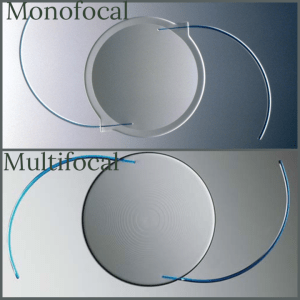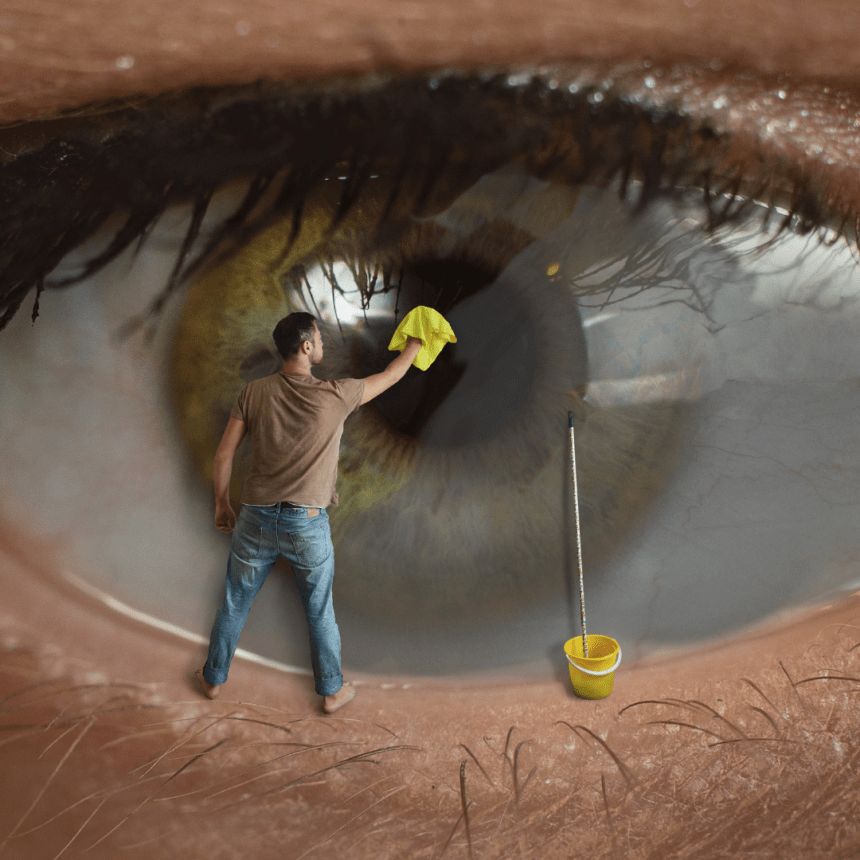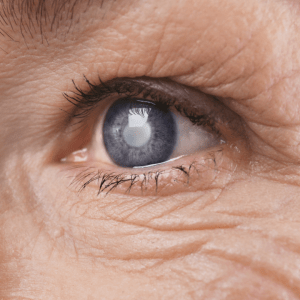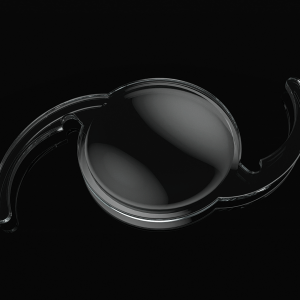A cataract is the leading cause of blindness worldwide and therefore, timely diagnosis and intervention are crucial to help restore vision.
Causes of cataract
A cataract may develop due to some of the following causes.
1. Age-related or senile cataract: this is the most common cause of clouding of the lens.
2. Trauma to the eye: either due to blunt or penetrating trauma disrupting lens fibers.
3. Eye diseases such as High myopia or pathological myopia, retinal detachment, eye inflammation or uveitis, etc.
4. Long-term use of steroids: this leads to the accumulation of fluid in the lens causing its clouding.
5. Congenital cataract: cataract present since birth. This could be due to maternal infection during pregnancy such as rubella or due to any inherited genetic condition such as Lowe’s syndrome.
6. Systemic diseases such as diabetes, metabolic disease, Wilson’s disease, etc.
7. Radiation: the amount of opacification of the natural lens being directly proportional to the dose of the radiation.
8. Nutritional deficiencies: Vitamin D deficiency is known to be associated with a certain type of cataract.
9. Lifestyle risk factors such as heavy smoking, excessive alcohol, high cholesterol, obesity, etc.
SYMPTOMS
Cataract causes gradual loss of vision and therefore, most patients in the early stages will not even realize that they have them until they go for a routine eye examination.
The symptoms that you must watch out for are:
1. Second sight: Patients who are 40 years of age or older and need glasses for near vision may be able to see without glasses if they acquire a cataract because the cataract causes the natural lens in their eyes to harden.
This is called second sight and is an indication of cataract development. This is a temporary phase because with time as the cataract worsens the patient’s near and distance vision will worsen.
2. Poor night vision and nighttime driving become difficult because of glare and colored halos.
3. Frequent change of glass power
4. Blurred vision or seeing double even with glasses.
How is A cataract diagnosed?
A simple eye examination by a trained eye surgeon or optometrist is enough. The diagnosis does not usually need any special tests.
Can cataract be treated WITH eye drops?
No medication or eye drops can “dissolve” or treat cataract. There is only one way to remove it and that is by surgery.
What is cataract surgery?
In cataract surgery, the doctor replaces a natural opaque lens with an artificial clear lens called an intraocular lens or IOL.
Once replaced, the cataract cannot come back although there can be clouding behind the artificial lens later on called PCO (Posterior Capsular Opacification), which can be cleared by a simple painless outpatient laser procedure.
Types of commonly performed cataract surgeries
1. MSICS: (Manual small incision cataract surgery) or manual removal of the lens
Advantages:
- Costs lesser than phacoemulsification.
- Is available even in remote areas with an inexpensive microscope.
- Relatively safer in some difficult situations in trained hands.
Disadvantages:
- Larger incision.
- A comparatively higher degree of astigmatism (cylindrical power/cross power).
- Longer post-op visual rehabilitation.
2. Phacoemulsification (MICS, microincision cataract surgery):
Use of ultrasonic energy for removal of cataract
Advantages:
- Smaller incision: The incision made is around 2.8 mm. In MICS or microincision cataract surgery, the incision size is even smaller.
- A lesser degree of astigmatism/ cylindrical power.
- Can be done with topical anesthesia (without any injection around the eye)
- Early post-op rehabilitation.
Disadvantages:
- Machine dependent surgery
- Expensive
- May prove challenging in certain difficult situations where femtosecond is preferred.
3. Femtosecond/Robotic:
Laser-assisted cataract surgery
Advantages:
- Precise and standardized incisions and power used to break the cataracts
- Low margin of error
- Done under topical anesthesia
Disadvantages:
- Very expensive
- Not available everywhere
- Increased surgical time
What are the pre-operative tests?
Before cataract surgery, after a detailed eye examination, the doctors advise certain tests to determine the Intraocular lens (IOL) power.
These tests measure the size and shape of your eye (A-scan). These values are then fed into a formula which then determines what power IOL will be the best for you.
If you have a very hard cataract or white cataract and the doctor is not able to see the back of your eye with a routine test, then you will need to undergo an ocular ultrasound (B-Scan) to check the health of the inner parts of your eye.
What are the options in IOL?
1. Monofocal:
This is designed to have a single point of focus, usually for distance.
Advantage:
- Clearer distance vision
Disadvantage:
- Requires glasses predominantly for near( reading) and intermediate (computer) activities.
2. BIFOCAL:
These lenses have two focal points, one for distance and the other for near.

- Reduces dependency on glasses for near and distance
Disadvantages:
- Requires glasses for intermediate distance
- Glare
- Halo around lights
- Difficult to do night driving
- Patients with retinal or optic nerve diseases are contraindicated
- Expensive when compared to monofocal IOLs
- Some may require glasses for fine near work, some distance work, working under dim illumination, or for fine-tuning the sharpness of images.
3. Trifocal:
These have multiple focal points which cater to near, intermediate (computer/laptop work), and distance vision.
Advantage:
- Reduces dependency on glasses for near, intermediate, and distance vision.
Disadvantages:
- Expensive
- Patients with retinal or optic nerve diseases are contraindicated.
- Patients with unrealistic expectations of results, due to the higher costs of surgery, are sometimes disappointed.
- Just like with bifocal lenses, some patients with trifocal lenses may require glasses for fine near work, some distance work, working under dim illumination, or for fine-tuning the sharpness of images.
4. EDOF (extended depth of focus):
These monofocal lenses are designed to have a single focal point extended over a wide area covering all distances.
Advantages:
- Reduced dependency on intermediate, and distance vision glasses. Near vision is also better to some extent.
- Minimal glare and halos around lights
- Better contrast sensitivity as compared to multifocal.
- Patients with retinal or optic nerve diseases are not completely contraindicated and they can discuss with their doctors their chances of being a candidate.
Disadvantages:
- May requires glasses to do fine near work like reading or threading
- Expensive
Toric lenses:
These lenses are customized lenses for patients with cylindrical power or astigmatism. This is available in monofocal as well as multifocal lens options.
our SUGGESTION:
All lenses (IOLs) are made of great quality material (hydrophobic material preferred over hydrophilic /PMMA or polymethyl methacrylate, by most of the surgeons) and your decision should depend on your requirements.
It doesn’t have to be difficult to select an IOL. It’s similar to going to a store to buy clothes. However, there’s a chance the shopkeeper may provide you choices and his viewpoints, and you might become confused. Know what you want and get a consultation with a specialist.
If you don’t mind wearing glasses for near work or you suffer from some kind of retinal (diabetic retinopathy) or optic nerve diseases (glaucoma), then monofocal IOLs are the best for you.
If you want to reduce your dependency on near glasses, then bifocal, trifocal and EDOF are your options.
Amongst the three, trifocal and EDOF score better than bifocal, as many patients, who have used bifocals, have reported glare problems and they see rings around a light, which are difficult to ignore, while some get adjusted to it.
But if you are a night-time driver, kindly avoid the multifocal IOL and go with either trifocal or EDOF.
What are the challenges during surgery?
Senile cataract is as a result of ageing and is comparable to greyin of hair. However, leaving it untreated could have an impact on your daily activities and can even make the operation challenging for your doctor when you decide to have them removed later.
The longer cataracts remain, the harder they become. The time at which they mature varies from person to person.
Hard cataracts are difficult to operate on as more power is required to break them. More power can cause some collateral damage to the surrounding structure and even the cornea (the outer transparent layer of the eye).
In eyes with cataracts that have been neglected for a long time (resulting in white cataracts and hyper-mature cataracts), the surrounding structures might be weak already, further increasing the risks of complications during surgery.
What are the post-operative dos and don’ts?
Generally, the postoperative recovery period lasts from a few weeks to one month. Good post-op care is very important for an excellent outcome after successful cataract surgery.
This period requires patients to share responsibility with their doctor and follow the advice given by the medical team on how to take care of the eyes after surgery.
Here is a list of things you need to keep in mind during post-op care.
1. Follow your doctor’s post-op prescription.
2. Use a sterile gauze piece to wipe the eyes.
3. Avoid head baths and water in the eyes for 15 days.
4. Avoid lifting heavy weights and strenuous exercise for a month.
5. Avoid putting any kumkum, or tika on the forehead.
6. Avoid going to dusty areas.
7. Do not touch or rub your eyes.
8. Use the given lubricating drops in case of irritation or itching.
9. Wear glasses indoors, outdoors, and while sleeping, at least for a few days after surgery. It is to avoid any inadvertent touching of eyes while asleep.
10. Do not sleep on the operated side for at least 2 weeks.
11. Report to your doctor in case of excessive pain, sudden blurring, watering, or irritation in the eyes.
A Quick Summary
A cataract is the opacification of the lens and it needs to be removed and replaced by an artificial lens to improve vision (acuity and/or quality).
The time of getting it operated on varies from person to person and mainly depends on how much is the loss of vision. Some people like to get it operated on early when the quality is compromised.
But one should not wait too long to avoid the risk of complications during surgery. The type of IOL depends on your wants and needs. So take your time and choose wisely.
If more help is required to understand this topic please feel free to reach out to us.
Disclaimer: The content on this site is for general information only and should not be used as a substitute for professional medical advice.
References:
1. https://pubmed.ncbi.nlm.nih.gov/31801354/
2. https://pubmed.ncbi.nlm.nih.gov/30627791/
3. https://www.nature.com/articles/s41598-020-72473-x




